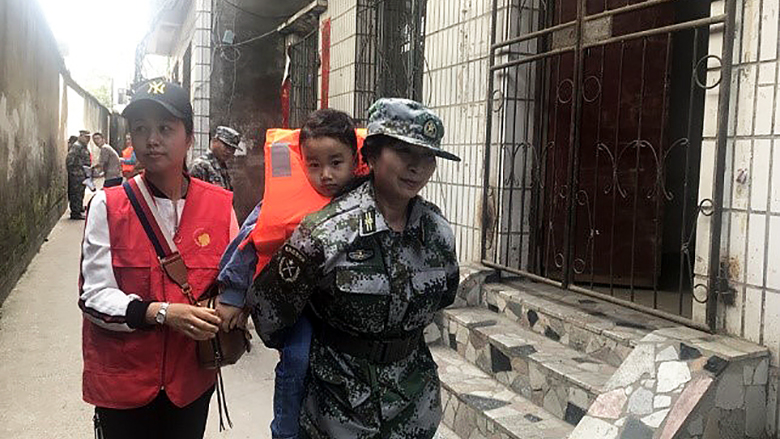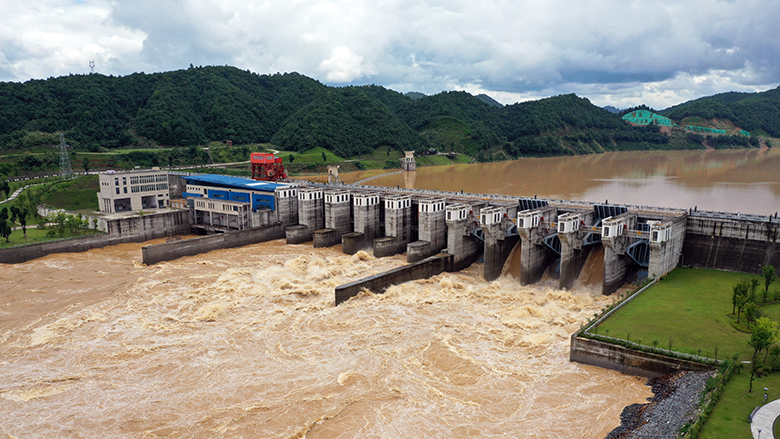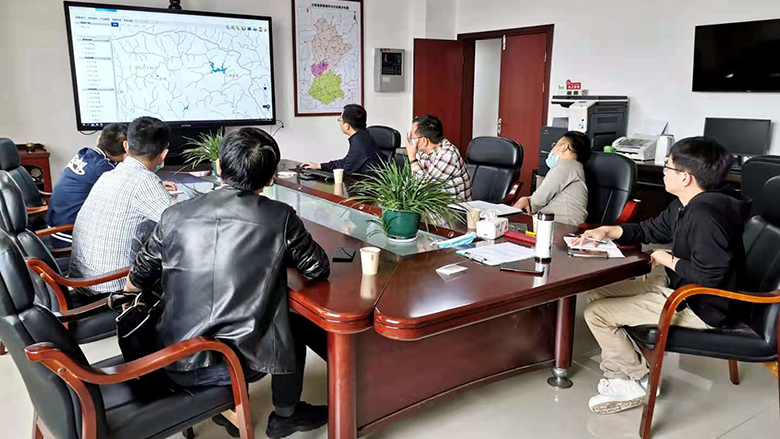Challenge
China suffers from flooding every year. Climate change is expected to affect water variability and increase the frequency and severity of flooding.
Since the historic 1998 floods of the Yangtze River, China had developed major flood protection systems along large rivers and main tributaries. However, a comprehensive flood management system along small and medium-sized rivers was still lacking. Between 2003 and 2013, over 90% of the flood-related disasters in China occurred in small and medium-sized cities, towns and rural areas, causing heavy losses of human lives and property.
Jingdezhen City is a medium-sized city in east China’s Jiangxi Province with a population of 1.67 million. It is known as the “Porcelain Capital” with porcelain production dating back to 1,600 years ago. The city was vulnerable to river flooding, with its low ground elevation and insufficient flood control infrastructure. A major challenge for Jingdezhen City was to reduce the risk of frequent floods from the Changjiang River, a medium-sized river flowing through the downtown area.
Approach
The Wuxikou Integrated Flood Management Project implemented a combination of structural and nonstructural measures. These included the construction of a flood control scheme which included a dam, a reservoir and a hydroelectric power plant to provide more reliable water and electricity supply for the city. Such measures upgraded the flood protection level from 20-year flood to 50-year flood, thus complying with the National Flood Control Standard for such a medium-sized city.
In addition, the project helped develop an integrated flood risk management system, the first among small and medium-sized cities in China, that also leverages non-structural measures including: (i) adopting risk-based flood management approaches and developing an Integrated Flood Risk Management Master Plan; (ii) enhancing local flood management capacity and cross-sector flood management coordination by establishing a Flood Control and Dispatching Center and providing trainings to professionals; (iii) enhancing flood forecasting and early warning capacity by developing a Decision Support System; and (iv) improving community awareness and preparedness through Information, Education and Communication activities.
For the people displaced by the construction of the dam, resettlement work was carried out in a participatory and consultative manner. A Resettlement Association Committee composed of representatives elected by project-affected people was established at each of the 29 resettled village sites to coordinate resettlement-related issues and keep the project-affected people informed. The project also made an explicit effort to link resettlement work with government poverty-alleviation programs.
Result
The implementation of the project contributed to the following results achieved during the period from 2013 to 2020:
- The flood protection level in Jindezhen City is increased from 20-year flood to 50-year flood.
- The proportion of urban population protected from 1-in-50-year floods was increased from 30 percent to 80 percent.
- The total area subject to inundation by 50-year floods in Jingdezhen was reduced from 35.58 square kilometers to 3.56 square kilometers.
- Flood risk in the central urban area of Jingdezhen City was reduced through the construction of the Wuxikou Flood Control Scheme, which is used in combination with the city dike system, as well as through the project-developed integrated flood risk management system.
- Community flood awareness and preparedness were increased through information, education, and communication campaigns, seminars, rehearsal and motivation activities that had reached more than 220,000 people.

(Flood evacuation rehearsal, Photo: Jiangxi Wuxikou Integrated Flood Management Project Management Office) - During the large floods in July 2020, the 50-year flood peak of Changjiang River was reduced to a 20-year flood level (lowering the water level at flood peaks by 1.2 to 1.4 meter) as a result of reservoir operation informed by the project-developed Decision Support System. The avoided loss was estimated to amount to RMB 3.264 billion (about US$496.45 million).
- Based on historical data, the annual avoided flood losses caused by potential floods under the same flood frequency and severity scenarios is estimated to amount to RMB 670 million (about US$101.89 million) for the assumed project lifespan of 50 years.
- The 15,808 project-affected people were all compensated with combination of cash compensation and land. The physically displaced households were allocated with one parcel of homestead plot for constructing replacement houses. At project closure, the per-capita income of the project-affected people had exceeded their pre-resettlement levels and exhibited an upward trend. A resettlement satisfaction survey found that almost 100% of the resettled people were satisfied with their land and housing and over 95% with impact compensation.


